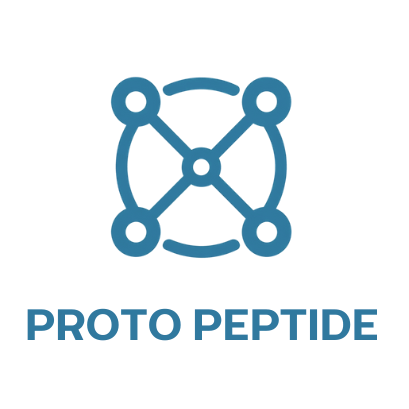Neuroprotection and Recovery: Peptides at the Frontiers of Brain Health Research
Peptide research is uncovering new ways that specific compounds may support neuroprotection, neurogenesis, and recovery in preclinical models of brain injury and neurodegeneration. Among the most studied peptides in this context are GHK-Cu, BPC-157, and TB-500. Though each peptide has a unique origin and mechanism, research demonstrates that all three may support neural recovery and reduce inflammation in laboratory models.
GHK-Cu: A Peptide with Cognitive and Neuroprotective Potential
GHK-Cu (Glycyl-L-Histidyl-L-Lysine Copper) is a naturally occurring copper-binding peptide found in human plasma. Preclinical studies suggest it may upregulate genes involved in neural growth, suppress inflammatory pathways, and promote DNA repair. In models of neurodegeneration, GHK-Cu has been observed to modulate pathways relevant to brain aging and tissue repair, positioning it as a peptide of interest for cognitive enhancement and neuroprotection research.
BPC-157: A Regenerative Peptide with Neuroprotective Effects
Body Protection Compound-157 (BPC-157) is derived from a protective gastric peptide and is widely studied for regenerative applications. In rodent models, BPC-157 has shown promise in protecting neurons after traumatic brain injury (TBI) and stroke. Its effects appear to involve enhanced vascular growth, dopaminergic neuron protection, and oxidative stress reduction — mechanisms that are particularly relevant for brain repair. BPC-157’s modulation of angiogenesis and nitric oxide pathways may underlie these neuroprotective benefits.
TB-500: Supporting Brain Cellular Regeneration
TB-500 (Thymosin Beta-4 acetate) is a synthetic analogue of a naturally occurring thymic peptide involved in tissue repair and regeneration. Although most research focuses on muscular and tendon recovery, emerging preclinical studies indicate TB-500 may support neural tissue regeneration by enhancing cell migration, modulating inflammatory responses, and activating stem cell-associated pathways in the brain.
Why Consider a Peptide Blend?
Combining GHK-Cu, BPC-157, and TB-500 may provide synergistic benefits in research due to their complementary actions. GHK-Cu offers antioxidant support and gene regulation, BPC-157 enhances vascular and neuronal protection, and TB-500 promotes tissue regrowth and cellular resilience. Together, these peptides form a promising combination for laboratory studies investigating multifactorial brain recovery and neuroprotection.
Conclusion: Expanding Horizons in Neuroprotective Peptide Research
While most data currently derive from animal and in vitro models, the evidence for these peptides continues to grow, highlighting their potential roles in neuroprotection, brain injury recovery, and age-related cognitive decline. Their distinct and complementary profiles make GHK-Cu, BPC-157, and TB-500 valuable tools for researchers exploring innovative approaches to brain health in preclinical settings.
Disclaimer
This content is intended for informational and educational purposes only and is not intended to promote or sell any product. It is not a substitute for professional medical advice, diagnosis, or treatment. Always consult with a qualified healthcare provider before starting any new supplement or research compound. The statements provided have not been evaluated by the FDA or Health Canada and are subject to change as scientific understanding evolves.
